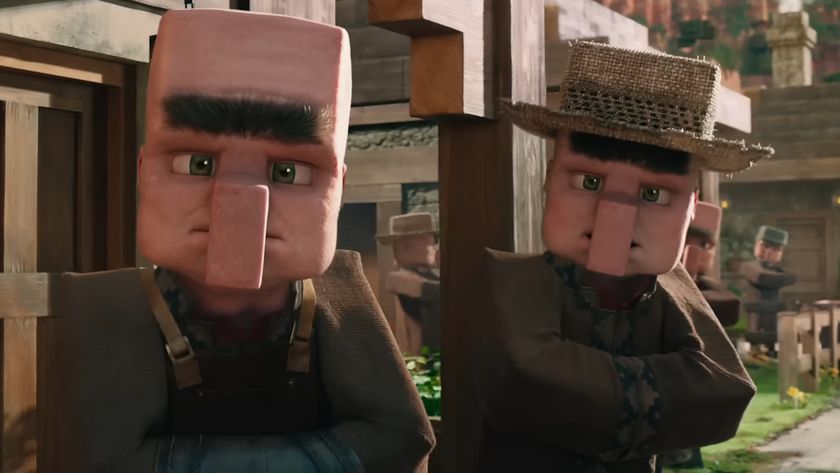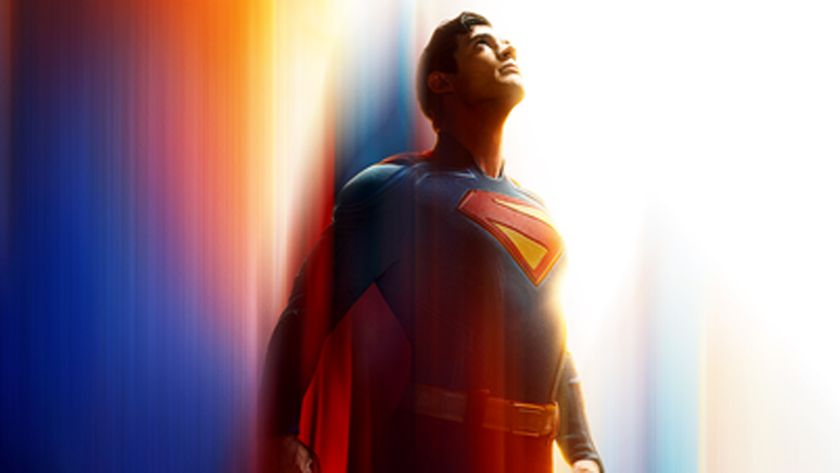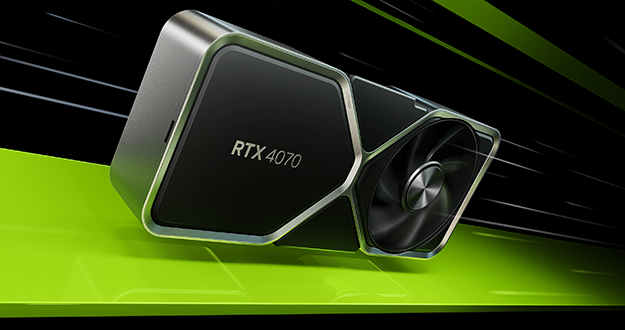The 10 best science fiction films of all time
Featuring aliens, robots, time travel and space
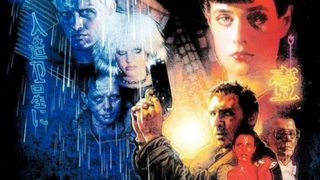
What makes great science fiction?
Choosing the best science fiction films of all time is extremely hard - especially if, like me, you love all kinds of sci-fi, from the the early classics of the 1920s to the moody cyberpunk tales of the 80s.
The term science fiction is deceptively complex, branching into a number of sub-genres and often placed alongside others. Despite its broad strokes, a lot of sci-fi is transfixed with issues surrounding artificial intelligence, extraterrestrial life, time travel and future civilisations.
On the surface, each of these subjects seems very different, but at their core you'll find the same motivation: a curiosity that cannot be stifled. There are a number of questions that these films ask, zoning in on how far reality can be stretched and if we're the only intelligent life in the universe.
It is a slippery, quixotic genre. Alien life, for example, will be radically different for two filmmakers. In one film, an alien will be a cutesy, cuddly thing that'll teach a young boy about friendship and love, in another it will be shadow and nightmare, a spidery species bred to kill and feed.
Likewise, a robot can be portrayed as a sweet-natured child's toy, a government-issued warrior that can contemplate its own identity or a monster that can burn an entire city to ash.
However these themes are handled, whether we find ourselves in a world of majesty or terror, good science fiction should always ask questions, and it should always be bold. It should remain loyal to that original curiosity, like the child who sneaks through cupboards looking for new lands.
With this in mind, here are 10 films that have come to define the genre. They are ones that have set a standard and ones that have bettered it. They are not ones that rely upon special effects or use action to tell a story, but instead challenge their audiences while expanding the realms of cinema.
Warning: Each of the following pages contain spoilers.
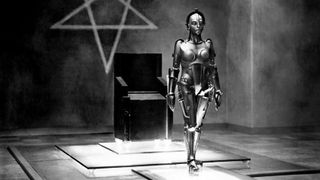
Metropolis, 1927
Sometimes one of the oldest examples of a genre can also be the best. Fritz Lang's silent masterpiece is the pinnacle of German Expressionism and one of the most ambitious science fiction films ever made.
It's even more impressive now than it was upon its release. Lang constructs an entire city without the use of special effects, and examines issues that are still extremely prevalent, such as the dangers of industrialisation, and the gulf between the rich and the working class.
In the bustling hive of Metropolis, this gulf is physical as well as metaphorical. The city is ruled by the wealthy, who swan around beautiful skyscrapers, while the poorest are forced underground to keep all of the machines running. Sound kind of familiar? While the workers toil away, their leader lives in the highest building of all, ruling the city like a demi-god.
Considering that the film was made in 1927, you'd think its vision of the future would look laughable, but it's completely the opposite. Lang's thriving cityscape is as sumptuous as it is severe, filled with Art Deco exteriors, Gothic cathedrals, and Italian futurism.
For Lang, the city was synonymous with greed, corruption and the abuse of power, a glossy surface that belies deep-rooted issues of exploitation and inequality. Could this be any more pertinent in 2015?
Elements from the film are now steeped in popular culture. The mad scientist, for example, is a trope that you can find throughout sci-fi, while the machine-human he creates anticipates the development of cyborgs. In this sense Metropolis is ahead of its time, revealing a future where androids will look like humans and have the ability to manipulate us into unthinkable acts.
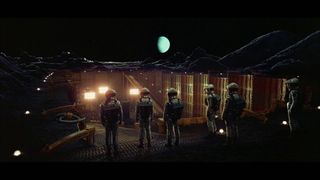
2001: A Space Odyssey, 1968
2001: A Space Odyssey is a beautiful, but often bewildering, piece of filmmaking. A film that inspires equal amounts of hatred and devotion, it may be the most famous sci-fi of all time.
No, it's not perfect; it's very grandiose and would have benefited from a trim (sorry, Stanley), but we've yet to see another sci-fi film that matches 2001's grandeur. Even if you despise it, there are sections that are just too striking to ignore, from the towering monolith that's discovered on the moon to the hallucinogenic journey to Jupiter.
It's also one of the first films to create the stifling feeling of being in space. Although mission pilots Bowman and Poole live on a huge spacecraft, they often appear lost down winding corridors and hemmed in on each side by endless horizons of space.
This mounting tension is heightened by the scientists' omniscient companion, the computer HAL 9000. Watching HAL malfunction, drunk on his man-given power and hell-bent on revenge, is one of the most frightening sequences in sci-fi, no matter how many times the idea of insane tech is recycled.
At times, 2001 feels like a film at odds with itself, its minimal dialogue and character development placed alongside breathtaking shots of space and a cacophonous, classical score. Instead of telling a straightforward narrative, it also takes on the whole scope of human evolution, from our beginnings in the dirt to our future in the stars.
Some films have tried to replicate it - Danny Boyle's Sunshine and Christopher Nolan's Interstellar come to mind - but the prize for the most maddening yet unforgettable space opera is still Kubrick's.
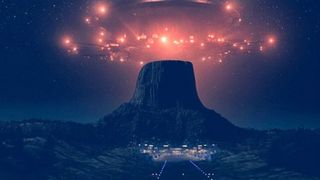
Close Encounters of the Third Kind, 1977
If there's one director with an unabashed love for fantasy and science fiction, it's Steven Spielberg. Just look at his filmography and you'll see it's sprinkled with some of the most beloved fantasy films of all time.
Some of these could have made the list: E.T, for example, will always be special, and Artificial Intelligence feels like a fairy tale about the relationship between humans and androids. Close Encounters was Spielberg's first professional attempt at sci-fi, however, and could be his finest.
No matter what age Spielberg is, he approaches each of his stories with the wide-eyed adoration of a child. This enthusiasm is especially true of Close Encounters, and spills over to the film's protagonist, an ordinary family man who becomes obsessed with the UFOs he begins seeing.
Close Encounters is adored because it manages to appeal to adults and children. In places it's surprisingly mature, highlighting how obsession can eat away at everything you cherish, including your family and career. Yet in scenes with three-year-old Barry, the film becomes a playground, portraying the heartfelt connection between alien intelligence and the unclouded mind of a child.
Critics will say Close Encounters isn't pure sci-fi and that its depiction of alien life is too sweet. This isn't true. Spielberg effectively portrays the yearning at the heart of the genre, the act of looking up at the sky and hoping that we're not alone in the universe. When Roy takes the alien's hand and leaves Earth behind, Spielberg shows yet again that a child's sense of adventure never truly leaves us.
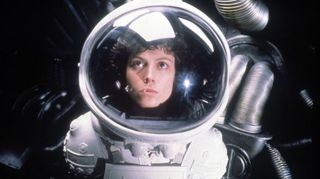
Alien, 1978
Where the aliens of Close Encounters are teddy bears from childhood, the creatures from Alien are the clammy hands that reach out from under your bed and grab you in the middle of the night. Two films about aliens made a year apart, and they couldn't be more different.
Ridley Scott's landmark sci-fi is the stuff of nightmares, set during an endless inky-black night and creeping with the grotesque. Once you've see it, you can never forget the face-hugging alien spawn, Kane's bloodbath "birth" or the skeletal silhouettes of the Xenomorph.
Alien is so effective because it feeds into our most primitive fears. It tells us that there is something lurking in the shadows, and that it's coming for us. The heroine of the film, Ellen Ripley, is transformed into Little Red Riding Hood, racing through the mechanical woodland of the Nostromo, while the Xenomorph looms over her like a fusion of Freudian symbolism and subconscious terrors.
The design of the Xenomorph and the film's tense, suffocating atmosphere could never be bettered in any of the film's sequels. Scott's Nostromo is a maze of hallways and rooms, bathing in shifting coils of shadow and silently ensnaring each member of the crew in the Xenomorph's sticky web.
The Xenomorph itself seems to shift with each scene. Sometimes it looks robotic, sinking into the Nostromo's walls like a steel structure covered in black scales, and at other times it looks sickeningly organic, slinking around with a fluid, feline skill and dripping fluid wherever it goes.
A terrifying blend of science fiction and horror, none of the Alien sequels have even come close to evoking the same perverse pleasure.
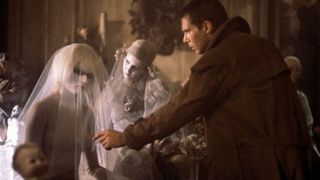
Blade Runner, 1982
Completely misunderstood when it came out, Blade Runner has since garnered cult status and is now touted as one of the most stylish sci-fi films of the 80s.
The film is a heady mix of old and new, combining 1940s Film Noir with a futuristic, cyberpunk streak. All of the Noir tropes are present, including the jaded detective and the smouldering femme fatale, as well as its shades of corruption and sex.
The crowded urban backdrop is present, except in this instance it's metamorphosed into a zenith of huge buildings, flying cars and huge billboards. It's a melting pot of Hong Kong food markets and New York high-rises, and so well crafted you can almost smell the trash littering the streets.
It's also one of the most challenging depictions of artificial intelligence we've seen, asking what humanity means when the boundaries between androids and humans have thinned considerably. The replicants, or synthetic humans, of this possible future look like us and can think like us, yet they are oppressed and hunted down whenever they step out of line.
The genius of Blade Runner is that there are no clear-cut heroes and villains. Our protagonist, Rick Deckard, is grizzled and apathetic, while his adversary, Roy Batty, is a renegade that refuses to be controlled by the state and has the bravery to fight for his freedom. Just because the film is shown from Deckard's point of view, doesn't necessarily mean he's the one we should root for.
There are elements that feel predicable now, such as the dangers of humans playing God and creating machines with an independent consciousness. But that doesn't make it any less heartbreaking.
Roy Batty is Frankenstein's monster, except in this instance it's worse because he also looks human. He is vilified for something he has no control over, and his dying speech becomes the film's most haunting moment.
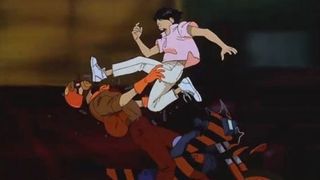
Akira, 1988
If you're into insane, punch-drunk animation or sinister dystopias set in the sprawling city, nothing beats Akira. Unfortunately, if you're not into this, you're unlikely ever to see Otomo's masterwork. In some ways Akira has suffered from being animated, dismissed by people who don't like watching 'cartoons' or who think all anime is for young teenage boys.
Yet the animation is one of Otomo's greatest achievements. Akira looks like it was drawn during an acid trip, so vibrant the colours seem to bleed off the screen. Painstakingly adapted from Otomo's epic manga series of the same name, entire sections look like they're been transported from the page, but with the lurid colours you'd find in a pulp comic book.
Although more than 2,000 pages were condensed into a two-hour film, Akira never feels overcrowded. It's confusing at times, but the plot is fantastic.
After Tokyo has been obliterated by a nuclear bomb during a third world war, Japanese society has disintegrated. In its place, Neo-Tokyo spreads like a virus, more a wasteland of bright lights and towering buildings than a city, and has been taken over by packs of wild teens.
This post-apocalyptic jungle is seen through the eyes of disillusioned youth, in particular the cocky gang leader Kaneda and the ostracised, insecure Tetsuo. Part of what makes Akira so brilliant is the way it revels in the driving force of youth - Kaneda and co become the ultimate enemies of the state because they refuse to be brainwashed. They're exploited by adults and victimised by the government, yet they still fight for each other and the friendships they've built.
Anime always feels like a hyperreal world – take Ghost in the Shell, Perfect Blue, or anything by Hayao Miyazaki – but Akira will always be the best.
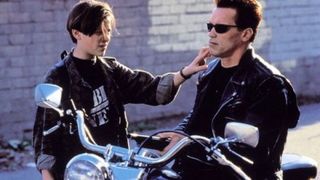
Terminator 2: Judgement Day, 1991
It almost seems sacrilegious to prefer a sequel over an original film, especially in an age inundated with sequels, prequels, spin-offs and reboots. The original is the best, we say, turning our noses up at the news of another unnecessary sequel, just leave it alone.
Terminator 2 may be one of those rare sequels that is better than its predecessor: it's slicker, it's edgier, and it feels less dated than the 80s original. It also messes with the formula of the first film and turns the audience's conceptions of characters against them. The moment we realise the T-800 has been sent back to save John Connor is one of the greatest twists of all time.
We also get to meet the famed leader of the human resistance in the form of a vulnerable, acid-tongued young boy. John goes from cruising the mall to finding out he is destined to become the saviour of the human race. It feels unfair, especially considering he's only supposed to be 10-years-old.
In an ironic and cruel twist, he also finds the closest thing he's ever had to a father in a machine that was originally created to kill him. The burgeoning affection between John and the T-800 becomes one of the film's most endearing qualities, contrasted with the dead-eyed, shapeshifting T-1000 that's programmed to kill a boy for something he hasn't even done yet.
From a nerdy point of view, Terminator 2 is amazing because of how visually ambitious it was for its time. State-of-the-art CGI was used for elements like the T-1000's liquid metal structure and required 35 animators, computer scientists, technicians and artists. Stan Winston's studio also produced puppets and prosthetics, including the metal skeleton effects of the T-800.
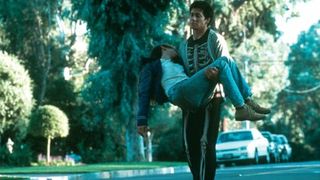
Donnie Darko, 2001
It's funny how a quirky directional debut can become one of the most influential films of all time. Donnie Darko shouldn't have been more than the sum of its parts, a promising indie flick from a budding director, but instead it evolved into a film everyone seems to love.
Part of Donnie Darko's charm lies in its suburban ennui. Many young people can sympathise with characters that live in suburban mall towns, sleepwalking through school and struggling to forge an identity around people who all look and think the same.
This is what makes Donnie such a deliciously anarchic character. He destroys public property, floods his school and outs the local pedophile, while trying to find meaning in his white picket fence life. This would have been a great film in itself, but instead Richard Kelly uses this as a foundation to explore ideas of time travel and alternative lives.
There are multiple theories and endless discussions about what the film means. The likeliest explanation (though no less mind-boggling) is that Donnie finds himself in an alternate dimension and must find a way back into the original universe before the duplicate one collapses.
It becomes an adult Alice in Wonderland, with Donnie falling through the rabbit hole of space time and wandering through a strange land where everything is similar yet infuriatingly abstracted.
It's a weird watch and you may never fully understand it, but it's one of the best films you'll see about time travel, plus a hilarious insight into the absurdities of suburban living (Sparkle Motion, anyone?).
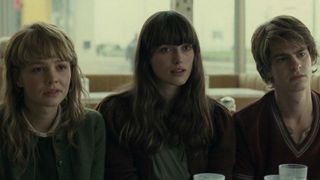
Never Let Me Go, 2010
Never Let Me Go is one of those rare films that doesn't feel like science fiction until after you've seen it. It doesn't wear the genre on its sleeve. Rather than being a detriment, however, this is a delight.
Mark Romanek's adaptation presents a future that feels very real, swapping the neon-lit, industrial cityscape for the English countryside. The film opens with three young friends in an elite boarding school shrouded from the outside world. Everything seems normal, if a little eerie, until they discover from a teacher that they are in fact clones.
They will never grow up, they will never have families. Instead they will donate all of their internal organs and then be quietly euthanised when their single function is complete.
It's a masterpiece in subtlety; a quiet, melancholy film that reveals more about its characters through facial expressions and body language than anything they say. Even when the titular trio grow up and start making their donations, the film is marked by a weary resignation rather than rage, making the few outbursts all the more horrific.
In another less obvious and heavy-handed film, the characters would run away or try to fight the system. They would steal guns and start a rebellion. The heartbreak of this film is that instead, these characters spend their short lives trying to convince their oppressors, and themselves, that they have souls.
Never Let Me Go again raises questions of what makes us human. How can something that can laugh and cry, feel joy and pain, not be one of us? And have we grown so desensitized, so eager to live forever, that we don't care how it's done?
This is an emotionally devastating experience and one of the bravest sci-fi films you'll come across.
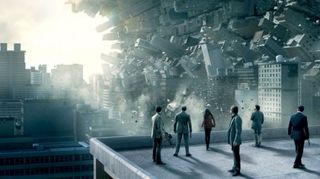
Inception, 2010
A world away from the refined period drama feel of Never Let Me Go is Christopher Nolan's Inception. The quintessential big budget blockbuster, it's packed with blistering chase scenes, stunning visual effects and mass devastation. The kicker is that most of the action takes place within the imagination, which throws a fantastical, almost avant-garde, shade over the film.
It's beautifully labyrinthine, pulling us seamlessly from dream to reality, from the opulent tea houses of Japan to the dusty back streets of Mombasa. Not many action films take time to drink in gorgeous architecture or revel in the limitless possibilities of the human mind.
In the dreamscape everything becomes malleable, and it's breathtaking to watch entire cities topple like children's toys or be manipulated like dough.
There is also an unexpected delicacy to Inception, a heart that pulses beneath its flashy exterior. The main character, Dom Cobb, is haunted by his wife's death, and guilt trails each of his dreams in her shape. Mal is like a slow rot in Cobb's brain, but she also gives the film warmth, allowing for quiet moments of a single teardrop or a lock of her hair.
The film is especially exquisite during its last third, when Cobb and his ragtag group of thieves delve layer by layer into Robert Fischer's mind.
It's here we see some of the most gorgeous scenes to ever grace the big screen, such as Arthur's elegant, anti-gravity fight in the hotel hallway, Ariadne twisting the streets of Paris into a pretzel, and the snow fortress where Fischer meets an echo of his dead father.
If there was ever a film to combine art-house sensibilities, grand fantasy, contemplative sci-fi and the big summer blockbuster, Inception is it.
